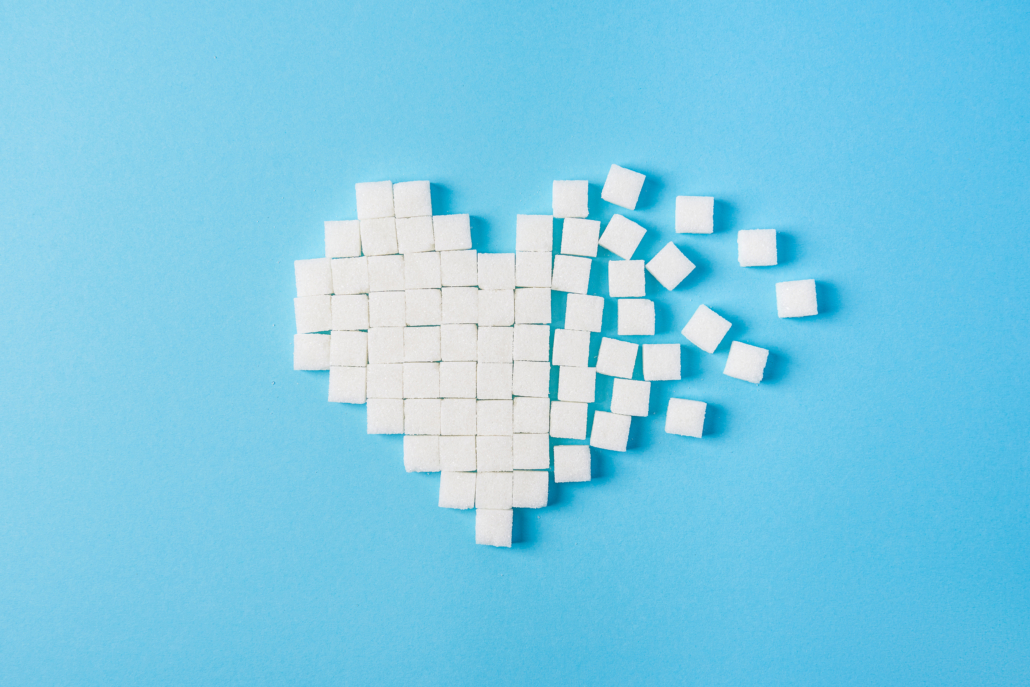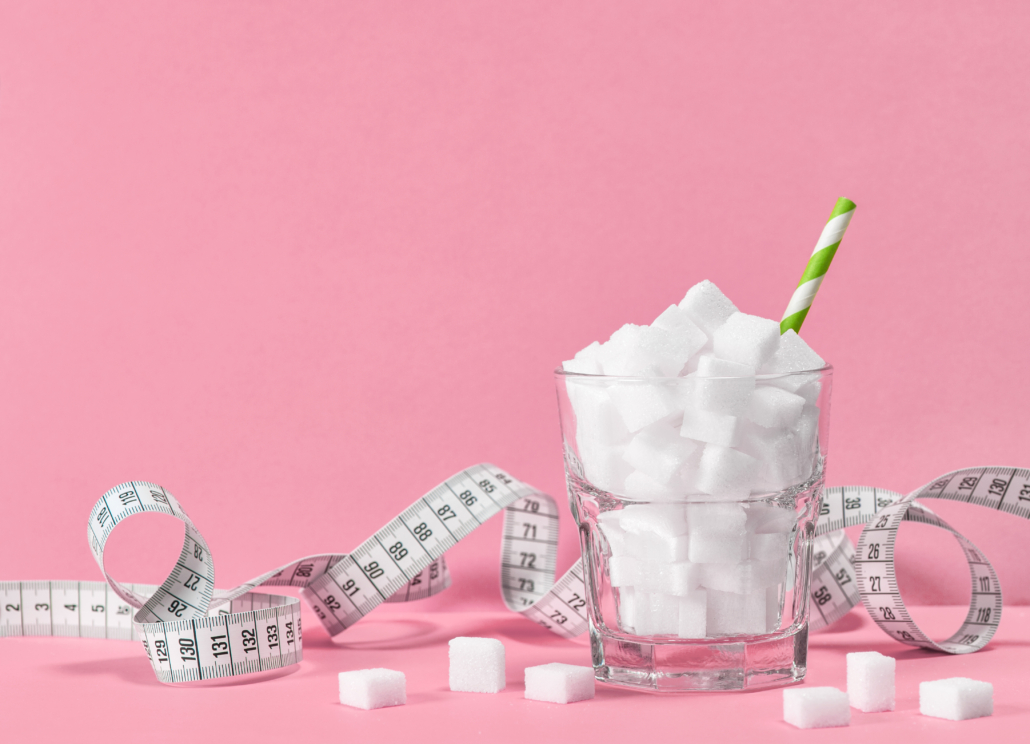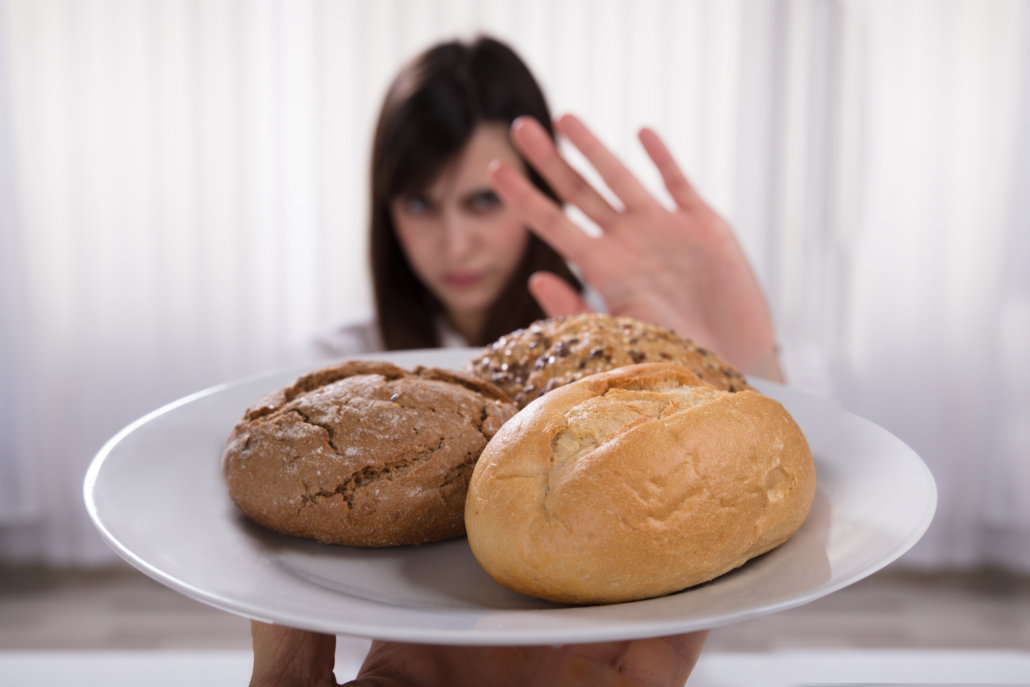We include products in articles we think are useful for our readers. If you buy products or services through links on our website, we may earn a small commission.
Carb Addiction: What it is, How to Kick it
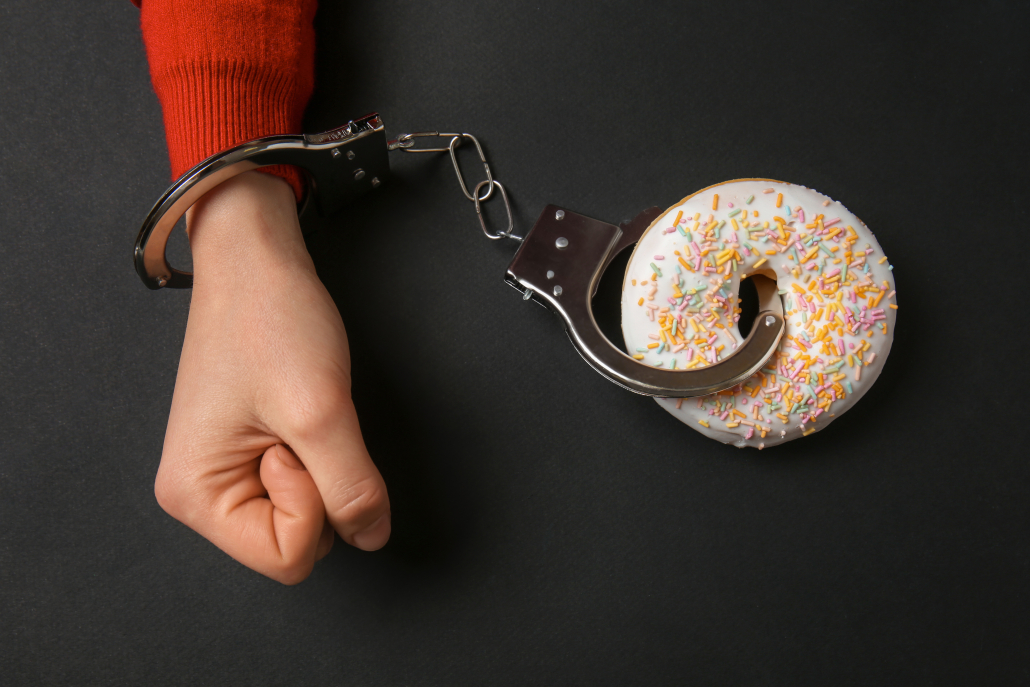
Is carb addiction real?
Maybe you’ve found yourself on a late-night run to the grocery store for boxes of sugary cereal. Or you can’t stop eating that pint of ice cream until your spoon pierces the bottom. Or you simply can’t imagine life without bread!
Most of us crave carbs. And when we devour carbs we feel happy–but only for a little while. Eventually, we need to eat more and more carbs just to feel ok.
For millions of people, this consistent and increasing stream of carbs can lead to negative health consequences like obesity, diabetes, chronic inflammation, heart disease, mood disorders, and hormonal imbalances. Yet we keep coming back for more.
This craving-reward-negative consequence cycle suggests that yes, carbs are addictive.
In this article, we’ll explore the evolutionary origins of carb addiction, along with recent research looking at the brain chemistry of carb addiction. Finally, we’ll offer tips to help you kick it.
Table of Contents
What are Carbs?
Carbs (short for carbohydrates), are one of the three macronutrients in food. The other two are fat and protein.
Each of these three nutrients can provide your body with energy (calories).
Carbohydrates are the basis of most foods in the standard American diet. All grains (refined and whole), sugars, fruits, and veggies are predominantly carbohydrates.
Foods as different as bread, popsicles, and celery are mostly carbs.
They’re each made from the same basic building blocks: single molecules of carbon, hydrogen, and oxygen. And your body breaks them all down into simple sugar (glucose) in your blood.
How do I know if I’m Addicted to Carbs?
As with alcohol and other drugs, you can be addicted to carbs if your consumption meets the following criteria:
- consuming carbs interferes with numerous areas of your life over a period of time
- you find it difficult or impossible to stop consuming carbs, and difficult to change behaviour that leads to consuming them
Addiction is similar across substances because it has to do with chemicals produced in your stomach and intestines that contribute to the production of dopamine in your brain.
Dopamine affects the pleasure and reward centers in your brain. When these centers are activated it causes cravings for more of the substance that activated them.
The science of carb addiction focuses on how the food we eat stimulates this circuitry.
Are Carbs Addictive? What the Science Says
Scientists have only recently started to take the idea of food addiction seriously.
Their research is aimed at better understanding the underlying mechanisms contributing to the rise of obesity, diabetes, and other so-called diseases of civilization. These include heart disease, chronic inflammation, osteoporosis, and many cancers.
It’s worth noting that they’re called the “diseases of civilization” because they are almost non-existent in traditional hunter gatherer societies.
It’s worth noting–and not a coincidence–that healthy traditional populations relied on high-fat low-carb diets. And of course, processed foods were non-existent.
Most food in the standard American diet is loaded with refined grains and added sugars–making carb addiction an important area of exploration.
In fact, Americans consume nearly 3 pounds of sugar each week!
Carb Addiction: An Evolutionary Perspective
From a dietary evolutionary perspective, carb addiction was a helpful survival trait during the vast majority of human history when sweet and carbohydrate-dense food was extremely rare in the natural environment.
Until a few thousand to a few hundred years ago, none of the fruits and vegetables that we have today existed. And the carb sources were fleeting and seasonal. Occasions when our ancestors came across a ripe fruit-bearing plant or a beehive were few and far between.
Interestingly, when they did find carbs, our ancestor’s bodies secreted insulin and other hunger hormones that told them to eat as much as possible. And these same binge-cravings occur in the bodies of us modern humans.
But why?
Let’s consider that one of the main jobs of insulin is turning sugar into fat.
When the body is craving carbs, what it’s really saying is, “hurry up and store as much fat as possible while this sugar is around.”
For our ancestors, these rare sugar binges resulted in small amounts of stored fat. Their bodies would eventually break down this fat to use as energy during leaner times and when fasting between successful hunts.
Ketosis is the name for this metabolic state where we break down fat into fuel molecules called ketones.
An abundance of evidence suggests this vision of ancestral eating patterns: For nearly two million years, our ancestors were hyper-carnivorous apex predators who ate mostly meat. 2 This optimized our bodies to feast and to fast between hunts. And to feast on the small amount of carbs when available.
When we consider the evolutionary roots of carb addiction, it’s no surprise that most of us eat too much of it.
The Carbohydrate Insulin Model of Carb Addiction
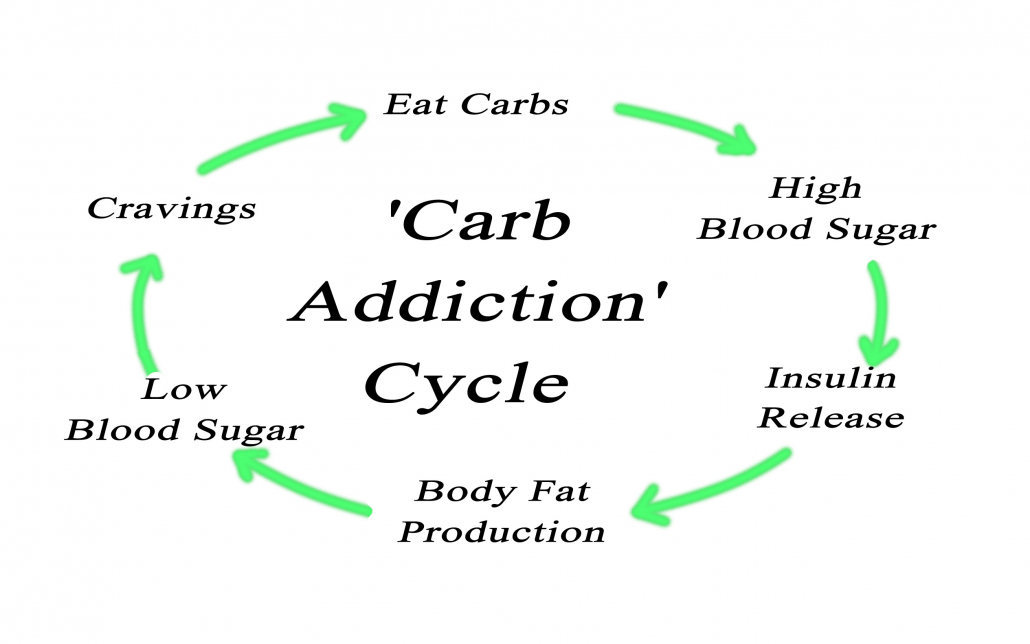
‘Carb Addiction’ Cycle
If carb addiction is an evolved trait, then insulin is the key to understanding how it works on a chemical level in the body.
The vast majority of the carbs we eat from grains, fruits, vegetables, and refined sugars get broken down into glucose (simple sugar).
Glucose gets sent into our blood, raising blood sugar. The body responds by secreting insulin.
Insulin’s job is to drive glucose into cells and convert excess sugar into fat.
The key to understanding carb addiction is that insulin triggers hormones and neurochemicals that both increase hunger and heighten the pleasure of sweet tastes.5
Brain Chemistry of Carb Addiction
Research on the brain chemistry of carb addiction looks specifically at these pleasure chemicals and the parts of the brain they activate.
Hi-GI Carb Addiction
Hi-GI carbs are simple (as opposed to complex carbs) that spike your blood sugar more quickly than complex carbs that take longer to break down.
A 2013 study by Harvard researcher David Ludwig, found that even when people don’t know what they’re eating, people who consumed high-GI carbs had greater activation of opiate and dopamine receptors in the craving and reward center of the brain.
These are the same “happy” chemicals that make us feel good when we’re spending time with friends and people we love.
Research also shows that repeatedly stimulating the reward center of your brain with high-GI carbs can reset your body fat levels. Your body attempts to preserve the fat you’ve accumulated.
Sugar Addiction
A 2018 analysis of numerous studies on the addictive nature of sugar (a simple carbohydrate) suggests that when we eat sweets we reinforce the neural pathways associated with addiction. This cycle transforms the brain in ways that increase our craving of sugar.
A 2013 study on rats revealed that the rewards experienced by the brain after consuming sugar are even “more rewarding and attractive” than the effects of cocaine.
Another animal study at Connecticut College showed that Oreo cookies activate more neurons in the brain’s pleasure center than cocaine!
And in case you’re wondering, just like humans, the rats ate the filling first.
Carb Addiction and Mood
The addictive nature of sugar is also evident in a study where rats were made to fast after sugar binging. In these fasted periods the rats had reduced dopamine and anxiety-like behavior.
The link between carb addiction and mood was explored in a study of women prone to emotional eating.
This part is kind of twisted: Researches induced the women into a sad mood and let them chose between a carb-rich drink or a protein drink. And even when blinded from knowing which drink was which, they were more likely to choose the carb rich drink.
Fructose Addiction
Studies looking superficially at the effects of fructose (the compound that makes up much of the carbs in fruit) found that it prompts insulin resistance, abnormal blood lipid levels, and liver inflammation in much the same way as alcohol.
The researchers concluded, “fructose creates habituation, and possibly dependence; also paralleling (alcohol)…leading to a “vicious cycle” of excessive consumption and disease consistent with metabolic syndrome.”
The Case Against Carb Addiction
While these studies suggest that some degree of carb addiction is real, some researchers aren’t yet convinced.
The main argument is that there hasn’t been enough human experiments. Other arguments center on the fact that much of the research is done on simple sugar and high-GI carbs.
Perhaps the most compelling argument is that it’s not just the carbs themselves that are addictive, but the other ingredients that they’re packaged with that makes certain foods more addictive than others.
One study looking at food addiction among 1,495 university students found that a combination of unique eating experiences and total calories in a food had greater influence on total calories eaten than sugar content alone.
These findings are evident when we look at the most addictive foods.
The Most Addictive Carbs?
To measure food addiction, researchers at Yale created the Yale Food Addiction Scale (YFAS).
Using this scale researchers discovered that the foods most associated with food addiction had a few things in common: They were mostly high-GI, high fat, and highly processed.
The chart below offers a rundown of the most addictive foods along with their glycemic load (GL). GL takes into account the GI along with the serving size of a food. This makes it a more accurate measure of blood sugar impact.
| Addictiveness Ranking | Type of Food | Glycemic Load (GL) |
| 1 | Pizza | 22 |
| 2 | Chocolate | 14 |
| 3 | Chips | 12 |
| 4 | Cookies | 7 |
| 5 | Ice cream | 14 |
| 6 | French fries | 21 |
| 7 | Cheeseburger | 17 |
| 8 | Soda (not diet) | 16 |
| 9 | Cake | 24 |
| 10 | Cheese | 0 |
As you can see, aside from cheese, the top 10 most addictive foods are loaded with carbs, refined sugar, and fat.
This list suggests that the combination of carbs and fat together triggers the most addictive chemical and behavioral responses in people.
How to Kick Your Carb Addiction
The key to kicking your carb addiction is to realize that overcoming addiction has way more to do with your environment than your willpower.
Before attempting specific diets, the very first step is going into your fridge, freezer, and pantry, and getting rid of all carb-heavy foods.
After you’ve removed the addictive substance from your surroundings, try implementing some of the following techniques:
- Mindful eating practices center on noticing your emotional and environmental triggers non-judgmentally. Simply by noticing the link between craving and eating you can bring in healthier choices
- Practice a Ketogenic or Carnivore Diet. These high-fat low-to-no-carb diets switch your body from using carbs for energy to using fat for fuel. There is no better or more effective way to reduce carb cravings.
- Before going into a carb-loaded situation (birthday party etc) load up on healthy fat and protein-rich superfoods like red meat and eggs.
- Move more! Research shows that getting more active triggers the release of happy chemicals like endorphins and dopamine that can fill the void that you’d otherwise plug with carbs. Walking, cycling, yoga, and swimming, are all fantastic low-impact ways to achieve a healthy natural high.
Carb Addiction: The Takeaway
When considering carb consumption in the context of human dietary evolution, along with the emerging clinical evidence, it appears that carb addiction is real.
Carbs activate neurotransmitters and the reward centers of the brain in similar ways to other addictive substances.
Addiction to carbs can lead to serious metabolic issues and diseases like diabetes, infertility, heart disease, and various cancers.
The most addictive carb-rich foods are often highly processed and contain high-GI carbs combined with fat. However, it’s worth noting that fat on its own is not shown to be addictive–rather, fat is satiating.
In fact, a high-fat low-carb diet may be an effective way to reduce carb cravings and help kick your carb addiction.












